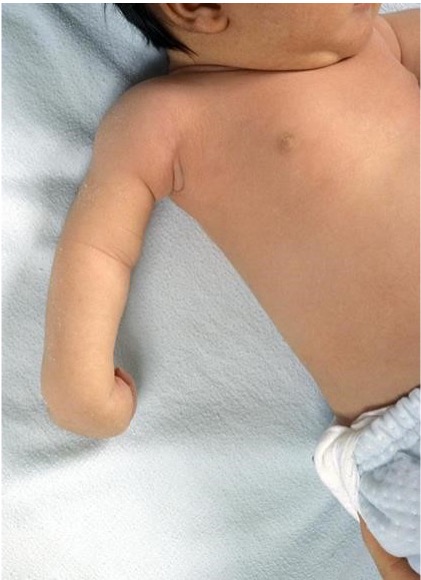
The prognosis in patients who have experienced a brachial plexus injury is obscure for several reasons. These injuries usually occur after high-velocity trauma and most patients will suffer multiple injuries that may be masked by one or more serious injuries to the chest or head region.
Therefore, determining the extent of the injuries can be challenging until an accurate physical exam is made. With these injuries, physicians also report neurological deficits in the arm that is likely a result of co-existent head injuries. In some instances, it may also take weeks or even months before a physician realizes there has been an injury to the brachial plexus.
Why Early Treatment is Important
Mild cases of brachial plexus injury may not require any treatment. However, they will still significantly benefit from physical therapy. On the other hand, severe brachial plexopathy prognosis can be devastating especially without treatment.
The majority of doctors use surgery to treat severe brachial plexus injuries that cause avulsion or tearing. In some instances, a donor nerve will be grafted onto the portion of the brachial plexus nerve that was damaged. The purpose of the graft is to help with reattaching the nerve that is usually separated from the spinal cord.
Patients with brachial plexus injuries have a better prognosis if they seek early treatment as early intervention gives the best chance of healing. Additionally, it also limits the risk of lasting symptoms. As mentioned before, mild symptoms may only require no other treatment apart from gentle physical therapy. If such injuries are experienced by a child, they will most likely recover totally in about three to six months of age.
In cases where surgery is a must, it must be done as early as possible. Any delays can cause severe damage with irreversible consequences. In children, evaluations should be done in six months for a medical practitioner to decide whether surgery is necessary. This gives the doctors a chance to see if the child will recover naturally. However, surgery in children is the last treatment option, and doctors will often consider other alternatives beforehand.
Complications
Brachial injury plexus prognosis is usually good, especially in babies who suffer injuries before birth. However, there is a potential for complications such as palsy. Depending on how severe the injury is, the child may experience weakness in the affected areas. There can also be partial or total paralysis. Some even lose sensation in the wrist, arm, or hand.
Fortunately, these complications usually disappear as soon as the nerves heal, which can happen naturally or with treatment. However, in some cases, the dysfunction may be permanent. Patients with permanent brachial plexus injury can also end up with tighter muscles in the affected areas. This is known as contractures.
The Prognosis for Mild Brachial Plexus Injuries
The prognosis of mild brachial plexus injuries is highly positive. However, patients who sustain mild injuries to these nerves may also experience a mild form of palsy. They may be able to move one arm more than the other. The injury also results in the patient having a weak grip on the affected hand. Fortunately, these symptoms usually disappear within six months.
The majority of mild brachial plexus injury cases require no treatment. All that’s needed is time to heal the injured nerves. A bit of physical therapy may also be needed. Most therapists recommend a range of motion exercises or massages. These two can significantly help to promote sensation and movement. They also help to speed up the natural process of healing.
Prognosis for Moderate to Severe Brachial Plexus Injuries
The prognosis of moderate to severe brachial plexus injuries is not so good. However, it’s still largely positive as there are several factors that can improve arm function. The main forms of treatment are a combination of surgery and physical therapy.
Luckily, the prognosis of these injuries is a lot better than what it was a few decades ago. This is probably because of the significant improvement in surgical methods for repairing nerves.
Children who never totally recover from brachial plexus injuries tend to live with some degree of palsy for their entire lives. This is a result of nerve damage, and it manifests as weakness, loss of sensation, or paralysis. These symptoms can be alleviated to some degree by surgery. However, when dealing with severe injuries, it can be very difficult, if not impossible, to repair the nerve completely. This means it’s also near impossible to eliminate the accompanying dysfunction.
Children with severe brachial plexus injuries that progress into permanent disabilities may need continued physical and occupational therapy. They will also likely have to use an assistive device. In some cases, corrective surgery is possible. Fortunately, they will still be able to live long and healthy lives. Children born with permanent brachial plexus injuries are usually given a poor prognosis. This can cause parents to feel as if they are responsible for the lifelong disabilities that accompany such conditions.
Brachial plexus injuries are quite common during childbirth. These often result from the hospital or doctoral errors. Parents who go through this can work with experienced lawyers to file for medical malpractice. Compensation from these cases can be used to help the children continue to receive treatment and to pay for assistive devices that are needed for healthy function.
Summing Up
In children, brachial plexopathy prognosis is mostly good, especially for mild injuries. However, moderate to severe injuries can cause lifelong complications. In both adults and children, it’s crucial to determine the anatomical location of the injuries. This will significantly help with prognosis. Patients with upper trunk injuries generally have a better prognosis than those with lower trunk injuries. An observation was made in several studies that patients with complete brachial plexus injuries generally had a dismal prognosis. Apart from that, the majority of authors indicate that infraclavicular injuries have a better prognosis than supraclavicular injuries. This was shown using the Axon reflex test in patients who sustained brachial plexus injuries.












